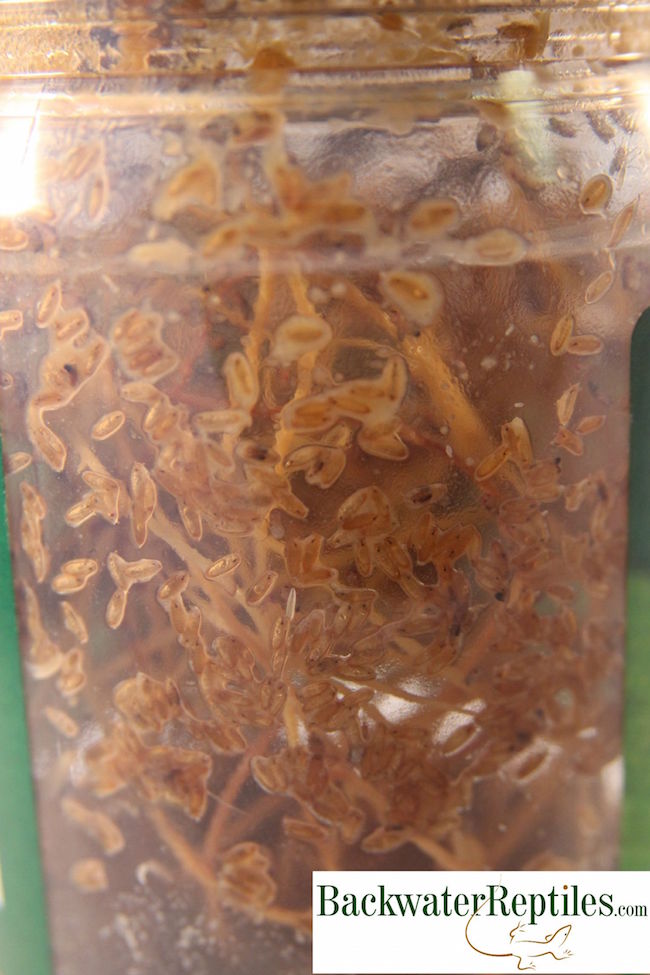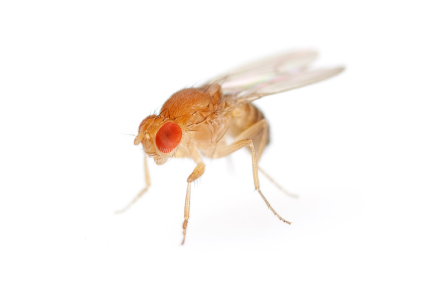In this blog post we compare and contrast Drosophila melanogaster vs. Drosophila hydei. Tiny reptiles and amphibians eat tiny food – makes sense right? But what, you might ask, is tiny enough to feed to a hatchling pygmy chameleon or a baby dart frog (both of which can measure only a half inch long)? The answer is fruit flies.
Backwater Reptiles sells two different kinds of feeder fruit flies – Drosophila melanogaster and Drosophila hydei. This article will detail the differences and similarities between the two. Hopefully it will help you decide which type of fruit fly to feed to your tiny critter.
When you place an order with Backwater Reptiles for a vial, jar, or fruit fly culture kit, you will receive the product via overnight delivery, which helps insure live arrival. Shipping these delicate insects via 2-4 day delivery is a risk.
Any fruit fly kit, jar, or vial from Backwater Reptiles comes equipped with food and egg laying material –everything the flies need to reproduce for at least three weeks. We recommend letting them breed and lay eggs for a few days before beginning to feed flies to your reptile, amphibian, or invertebrate. If you feed them off too quickly, the colony won’t reach it’s full potential.

The main difference between the two species of fruit flies is size. D. melanogaster are generally 1/16th of an inch long, whereas D. hydei are approximately 1/8th of an inch long. D. hydei are therefore quite a bit “meatier” and larger of the two species.

D. melanogaster are not only great feeder insects, but they are very commonly used in scientific experiments. Different genetic varieties exist and there are even wingless variations which make good feeders because they obviously can’t fly away to escape predators. D. hydei can also be bred and purchased as flightless insects, however they will usually still retain their wings. None of the fruit flies we sell can fly.
As far as regeneration of fruit fly specimens goes, D. melanogaster has a quicker life cycle than D. hydei. Starting from scratch, it usually takes around 14 days for a new bunch of D. melanogaster to emerge and from day 14 through 30, new feeder flies are available consistently on a daily basis as new flies are constantly emerging. D. hydei on the other hand, has a regeneration cycle that begins around 21 days when the culture is started from scratch. D. hydei also have population “booms” – every five to seven days after the initial 21 day mark, the culture will go from seemingly empty to bursting with flies overnight. Each culture will produce approximately two to three booms.

Flightless cultures of both species of flies are capable of regenerating their ability to fly. Because flightlessness is a recessive gene, both parents have to possess this trait. If a wild fruit fly that can physically fly introduces its DNA into the gene pool, you will have flies born that can “magically” fly again. So if you don’t want to deal with pesky little fruit flies escaping and flying all over your home or your reptile’s enclosure, be sure to keep your culture safe from foreign fly DNA.
Both species of fruit flies are perfectly acceptable food for very small reptiles and amphibians. We recommend them for dart frogs, baby chameleons, tree frogs, salamanders, small scorpions, and spiderlings. Backwater Reptiles currently offers both varieties of feeder fruit flies for sale on our website.


